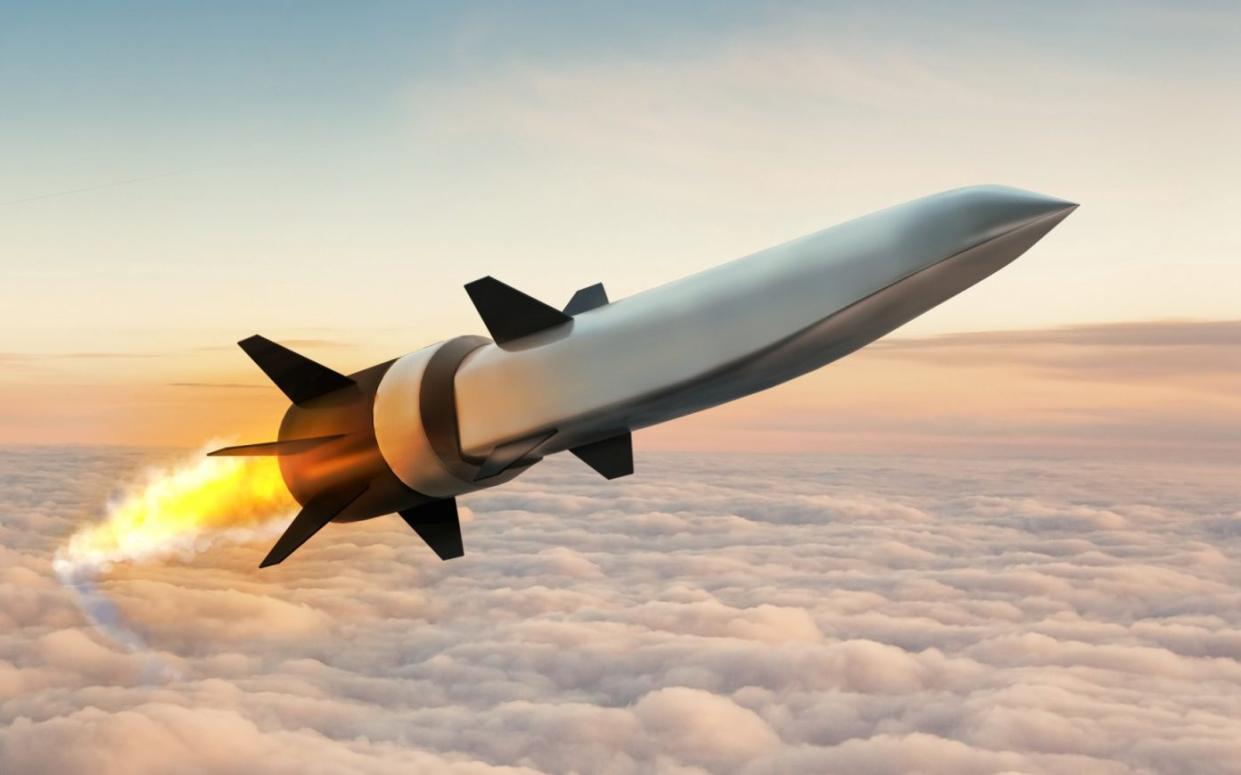Hypersonic missiles won’t be much use in the war against China

The US military’s expensive scramble to field hypersonic strike missiles is pointless for the likeliest war scenario, according to one analyst.
Sure, a hypersonic missile – any maneuverable missile traveling at least five times the speed of sound – would strike fast and be difficult to intercept.
But that speed and protection come at a high cost. Worse, according to analyst Bill Sweetman, there just aren’t a lot of places American forces can place hypersonic missiles ready for the most important possible conflict: a clash with China over, say, Taiwan.
“Here’s one reason why hypersonic weapons may not be very useful for the US in the Western Pacific: the only ones that would be available for prompt strike would be those in vessels that were within range when a conflict starts,” Sweetman wrote in a September essay for the Australian Strategic Policy Institute. “Not many.”
The US Navy, US Army and US Air Force are all fielding or developing their own hypersonic missiles. Each would be difficult to deploy at a meaningful scale in a war with China.

The Air Force’s Hypersonic Attack Cruise Missile is a rocket-boosted, air-breathing system – a scramjet. It should be small enough to fit under the wing of an F-15 fighter and still range as far as a thousand miles – meaning F-15s flying from Okinawa, Japan’s southernmost prefecture 450 miles from Taiwan, could strike targets around Taiwan and deep inside China.
But the HACM, as it’s called, mostly exists on paper. The Air Force plans to spend around $2 billion testing the missile over three years starting in October.
HACM – specifically, its scramjet engine – might not work. “The air flowing through the engine is hot, compressed and undergoing thermochemical change, and the scramjet won’t light below Mach 4,” Sweetman wrote.
“The scramjet engine creates almost as much drag as it does thrust. If either number is missed, the engine produces no net power. The only way to get good test data is to fly a large-scale vehicle.”
While the Air Force tests the HACM, the Army and Navy are rushing to field their own hypersonic missiles, each costing $50 million. The Army’s Long-Range Hypersonic Weapon and the Navy’s Conventional Prompt Strike system are both hypersonic glide bodies. Boosted by a rocket, they glide toward their targets over a distance of potentially 2,000 miles or more.
The Army fielded its first LRHW battery, with eight truck-mounted launchers, last year. The Navy is installing CPS in batteries of 12 apiece aboard its three Zumwalt-class destroyers – and also aboard a batch of nine new attack submarines that began construction last year.
If a war with China breaks out in the next few years, it’s possible only the hypersonic missiles on the Zumwalts and in Army batteries staging from some vulnerable island outpost – at most, a few dozen missiles – would be immediately available.
“China doesn’t have that problem,” Sweetman pointed out. Its own main hypersonic missile, the gliding DF-17, launches from a truck. DF-17 batteries could stage anywhere along the Chinese coast opposite Taiwan for strikes on Taiwanese and American forces across the region.
No one outside of China, or potentially some secretive US intelligence agency, knows for sure how many DF-17s Chinese forces possess. Scores? Hundreds? The DF-17 first appeared in public in 2019, so China indisputably has a significant head start in fielding hypersonic missiles. “Just about the whole stock can be available for firing from day one,” Sweetman pointed out.
The tiny number of hypersonic missiles US forces could fire in the early days of a war with China seems even tinier given the possible scale of that conflict. When the Center for Strategic and International Studies in Washington DC gamed out a war over Taiwan last year, it concluded US and Taiwanese forces could defeat the invading Chinese – but it would take thousands of cruise missiles, each costing a few million dollars..
What’s a few dozen hypersonic missiles in a campaign begging for thousands of long-range munitions? Especially considering that each of the fast missiles costs $50 million and their payloads are unimpressive.
Sweetman goes on to suggest that the whole concept of hypersonic strike is perhaps, well, overhyped.
“How important is it to exceed Mach 5?” he writes. “With modest stealth measures, a high-supersonic vehicle is as survivable as a hypersonic one … There’s no sign, in all the enthusiasm over hypersonics, that the question has ever been asked. Maybe it should be.”


